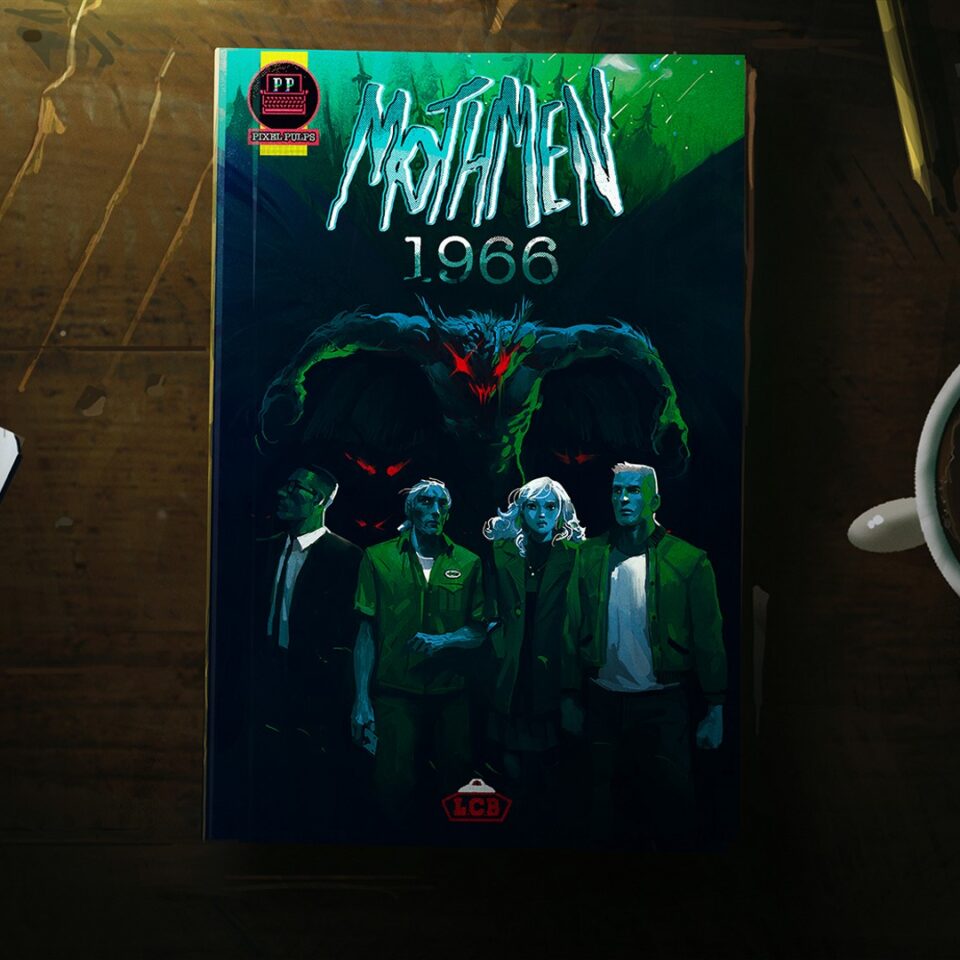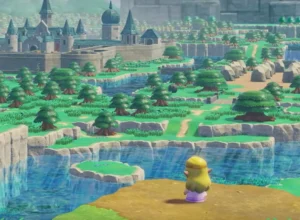A lurid 60’s West Virginia, paved in pixels, beckons you to Mothmen 1966, like a human to fine interactive fiction.
But, not all glimmer houses bliss, and some can even dissipate long before you’d imagine.
Described as a “Pixel Pulp”, Mothmen 1966 is the first game of a volume of titles by novelist Nico Saraintaris and artist Fernando Martinez Ruppel, collectively known as LCB Game Studio. The next games in volume one, Varner Lake and Bahnsen Knights, will be released later with Varner Lake already available to wishlist on Steam.
The story of the game deals with the mythical Mothman, with chapters cycling through three main characters. There’s a grumpy gas station owner called Holt and his sick grandmother; teenage history student couple Victoria and Lee; and the walking exposition, paranormal investigator Lou, the only character not playable. Set during the Leonid meteor shower of 1966, Mothmen 1966 is a visual novel where the visuals are most definitely the (shooting) star of the show.

A limited five colour palette of black, cyan, green, white and the odd splash of red paints an atmospheric slice of Americana. One of the lead characters pallid white Abby Arcane hair coupled with the eccentric colours recall memories of Alan Moore’s Swamp Thing run and the American Gothic landscape it presented.
Faces and monsters alike are carved with a pixel hatching scratchiness that oozes horror and shows what is capable with a minimal toolset. Sadly, this less-is-more approach does not extend to the writing, which tells far more than it shows. The clunky exposition is a detriment to the pacing and atmosphere. Perhaps making the exposition collectibles would fit better with the theme of uncovering a conspiracy.
This mass of lumbering exposition only serves to disengage the atmosphere hard-won by the game’s reserved palette and taught style. Less is more when it comes to pixel art, and the same often applies to writing. One only has to look at Famicom Detective Club as a great example of concise writing that uses its NES memory limitations to deliver a tightly written and paced story.
Mothmen 1966’s interactive elements – sort of proto-quick time events, combining the worst of both QTEs and “choose your own adventure” gamebooks – also left me cold and, occasionally, hot with rage. One such scene involves a bunch of coyotes around your car; Lee needs to scare them away so he and Victoria can make a getaway. You are presented with an abundance of options and most of them will lead to death and then a retry.

Reduced to trial and error, all tension is stripped as you select an option, die, retry, then select another option a dozen times until its over. Every interactive section is like this, and a complicated one near the end of the game thankfully has another character do it for you after a minute or so. A rising gradation of danger would up the engagement and reduce tedium.
Mothmen 1966 pulls you in with those dreamy visuals some great audio – the sound effects, in particular, are pitch perfect – but the game was over briskly, with the story developing in an odd way. (That’s not a compliment.)
Although there was a lot about the game that didn’t work for me, there’s at least a solid enough foundation for the next “Pixel Pulp” to build upon. Tidier writing and sharper interactivity would help to create a stronger next entry when Varner Lake releases later this year.
Game: Mothmen 1966
Platform: PS4, Xbox One, Xbox Series X|S, Nintendo Switch, PC
Publisher: Chorus Worldwide
Developer: LCB Game Studio
Release Date: Out now






